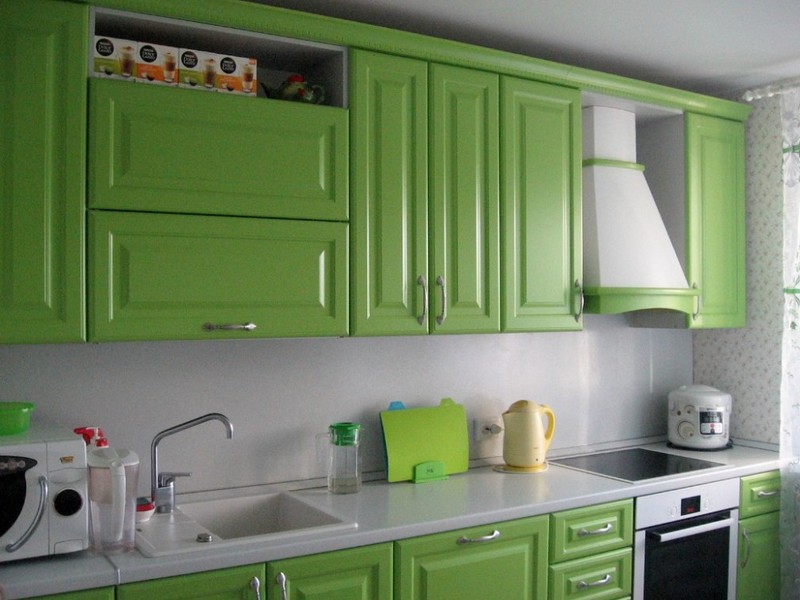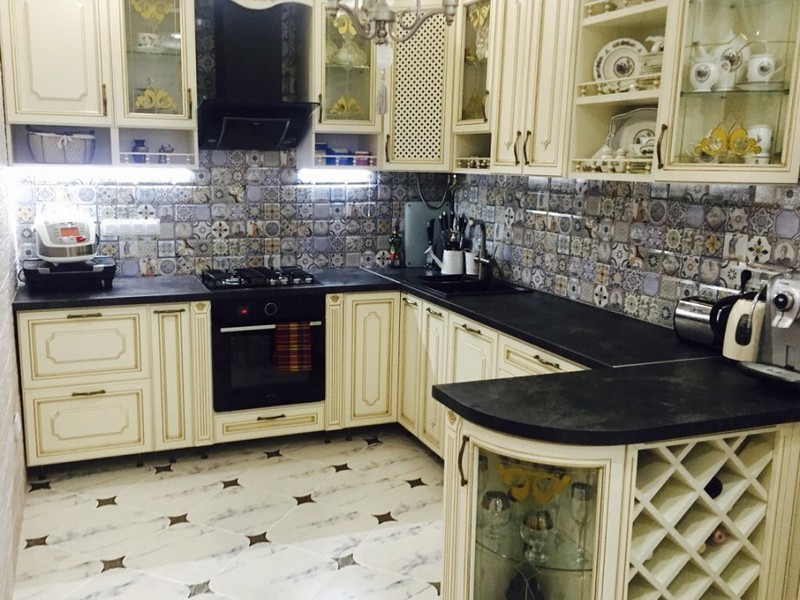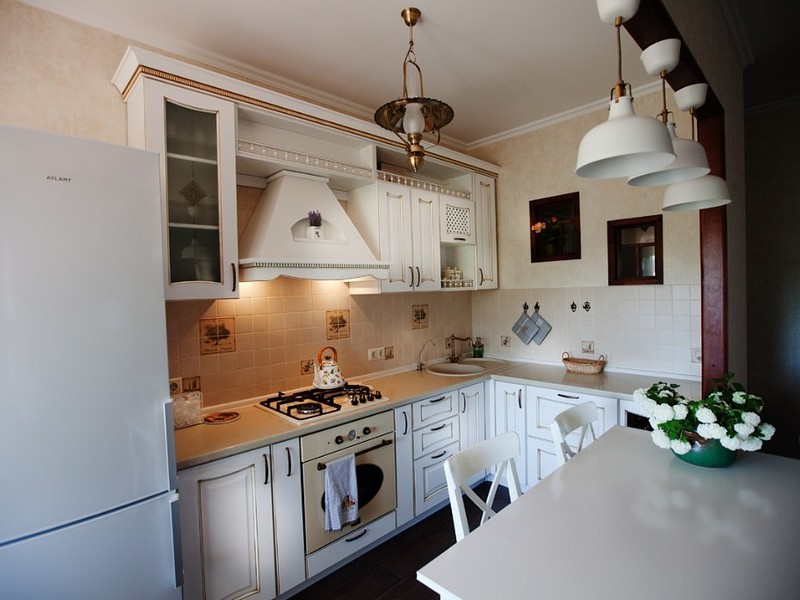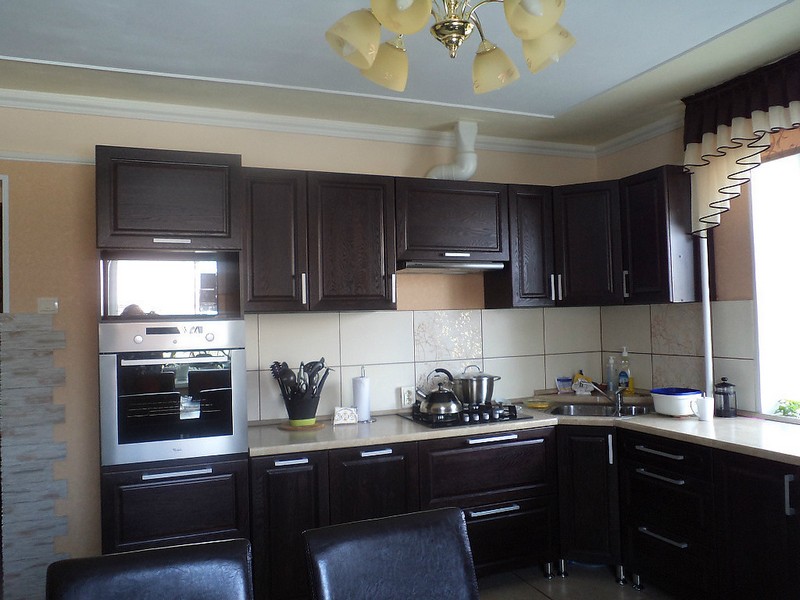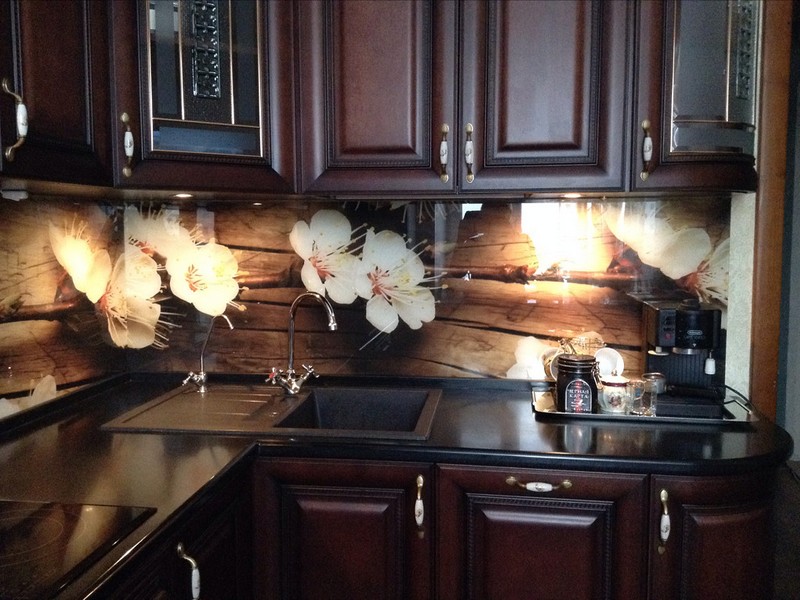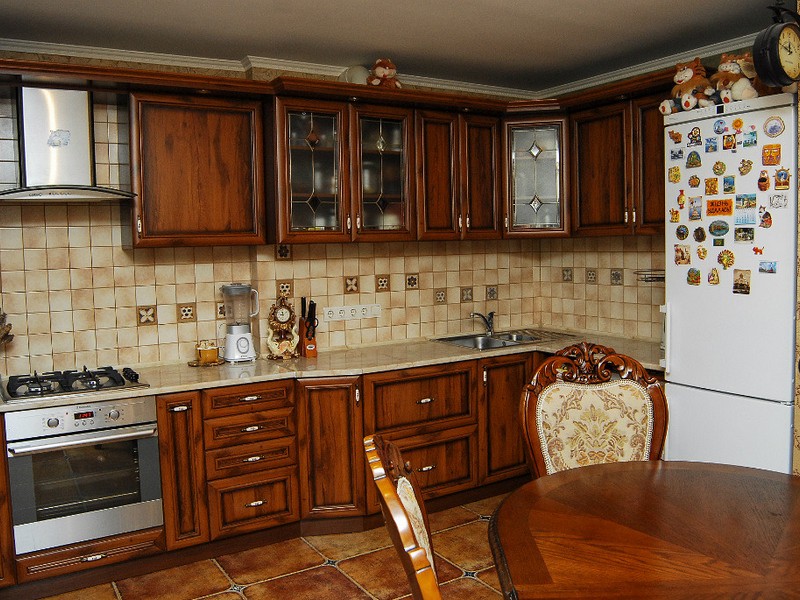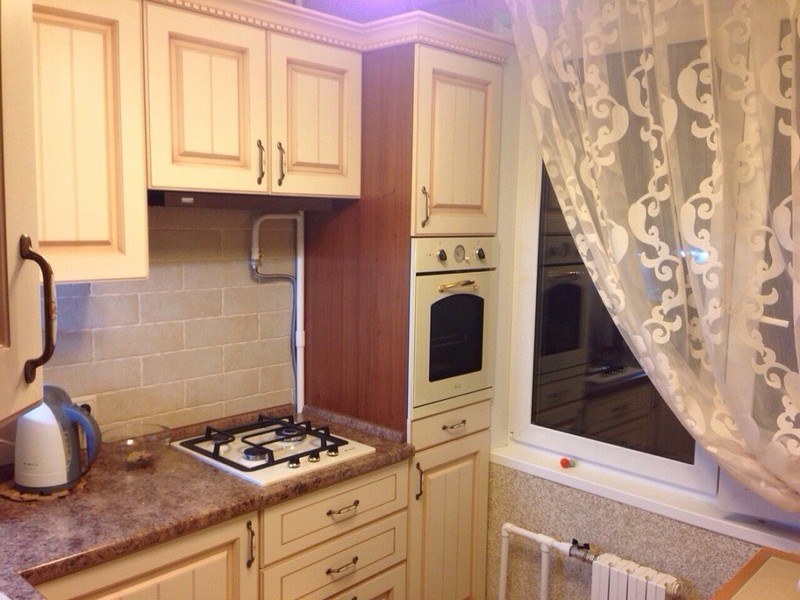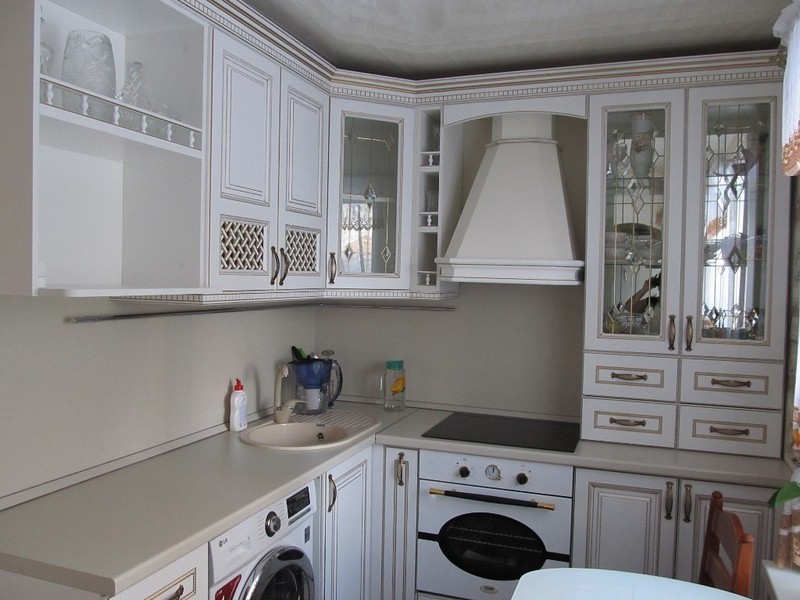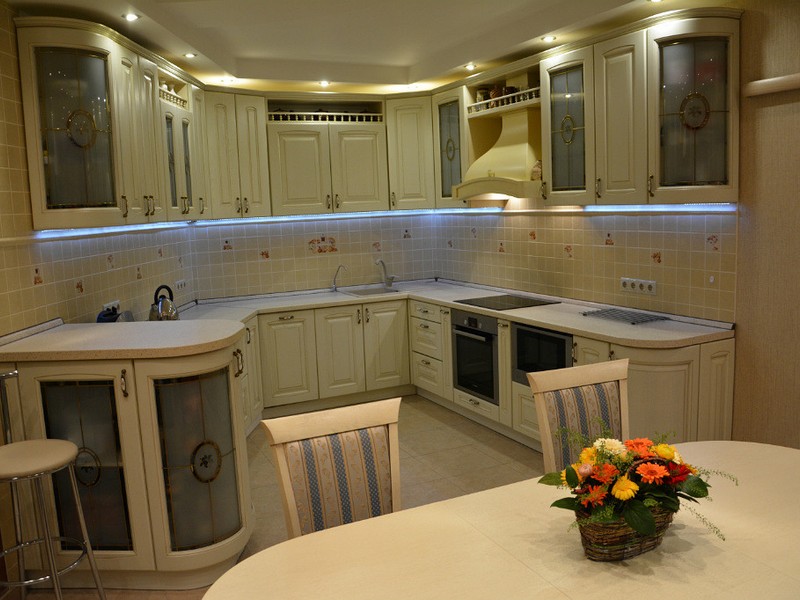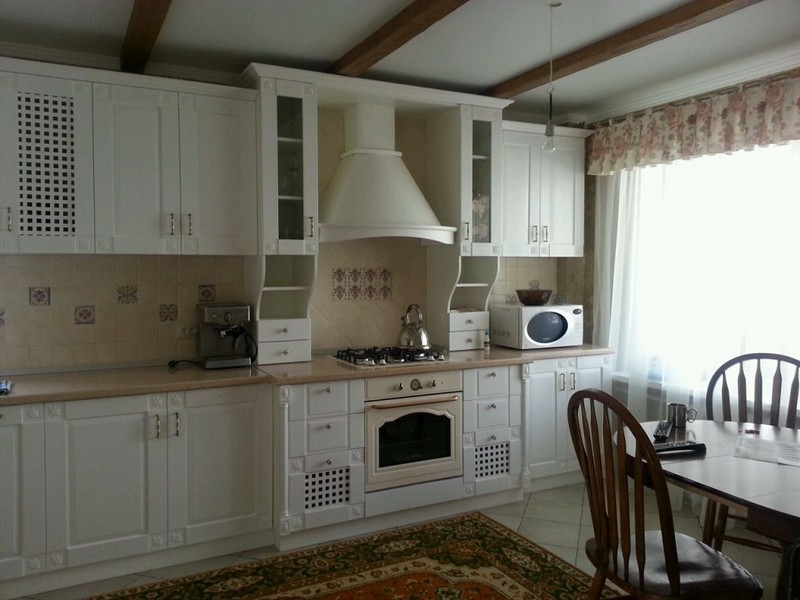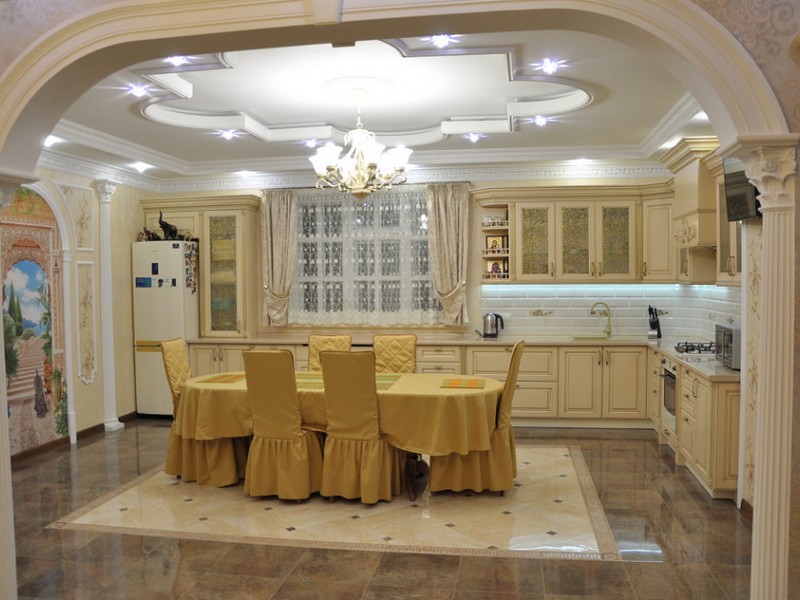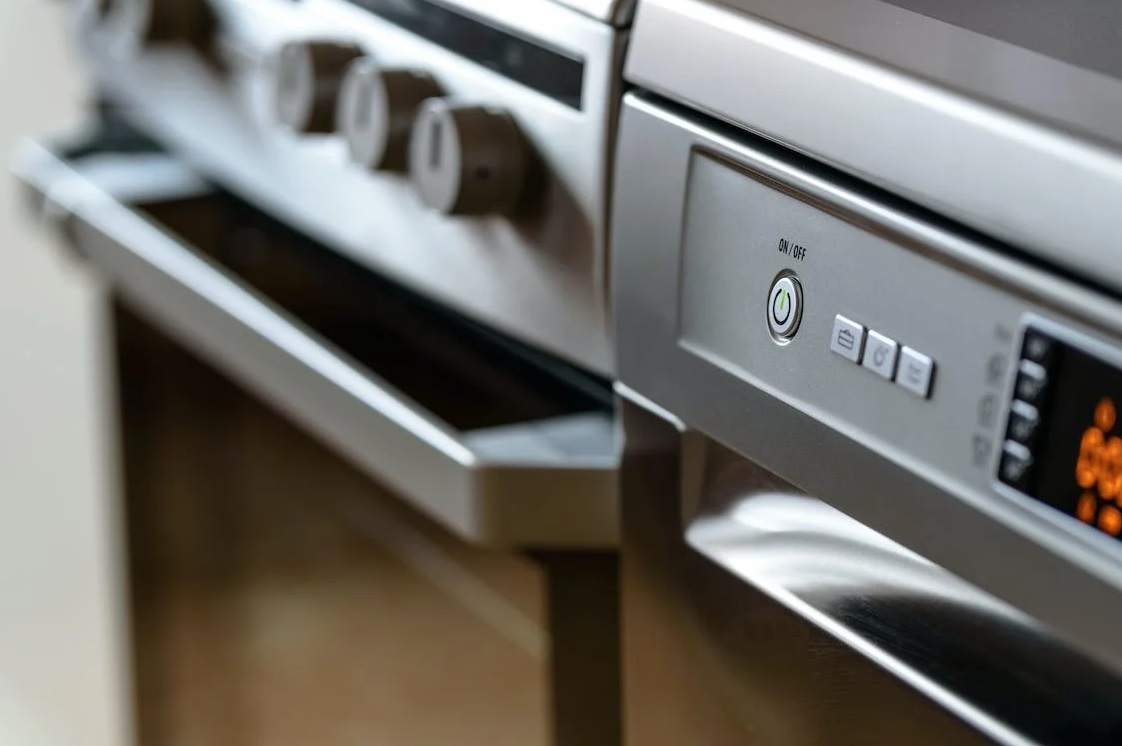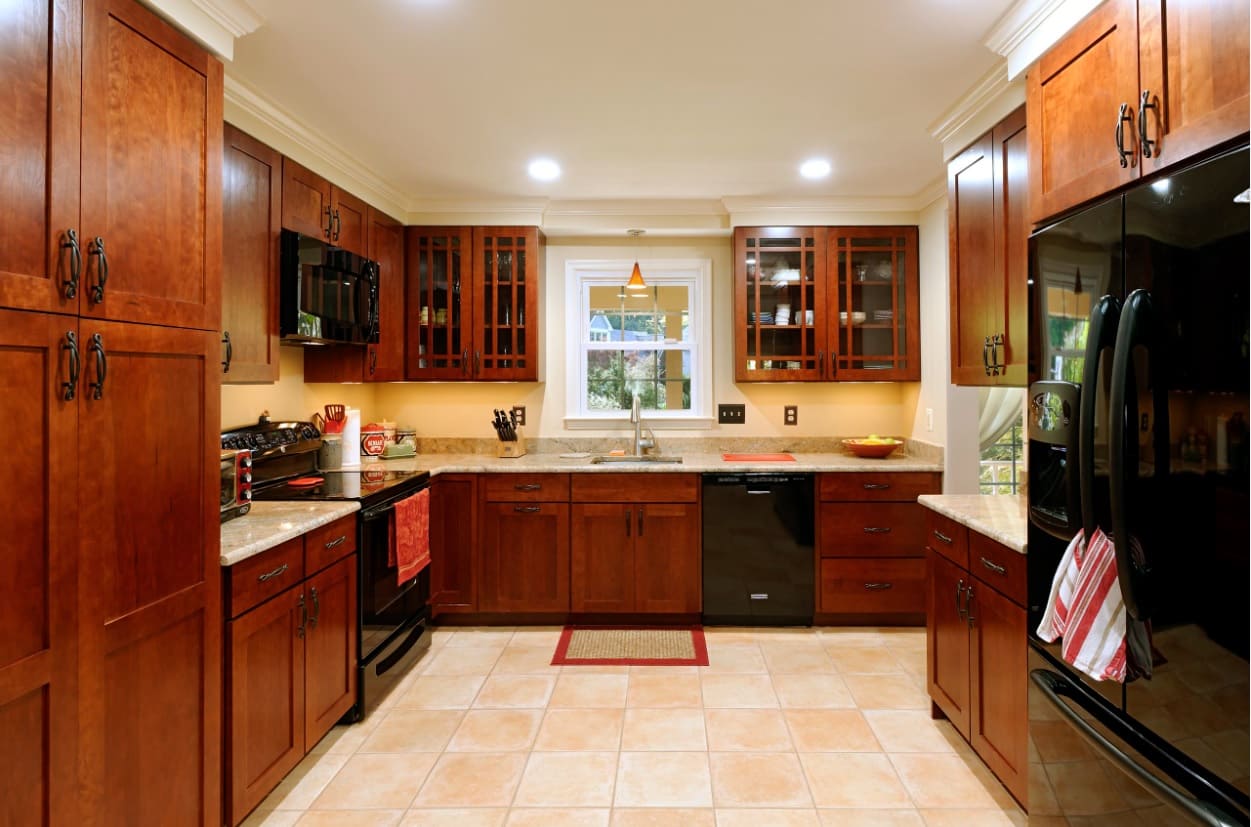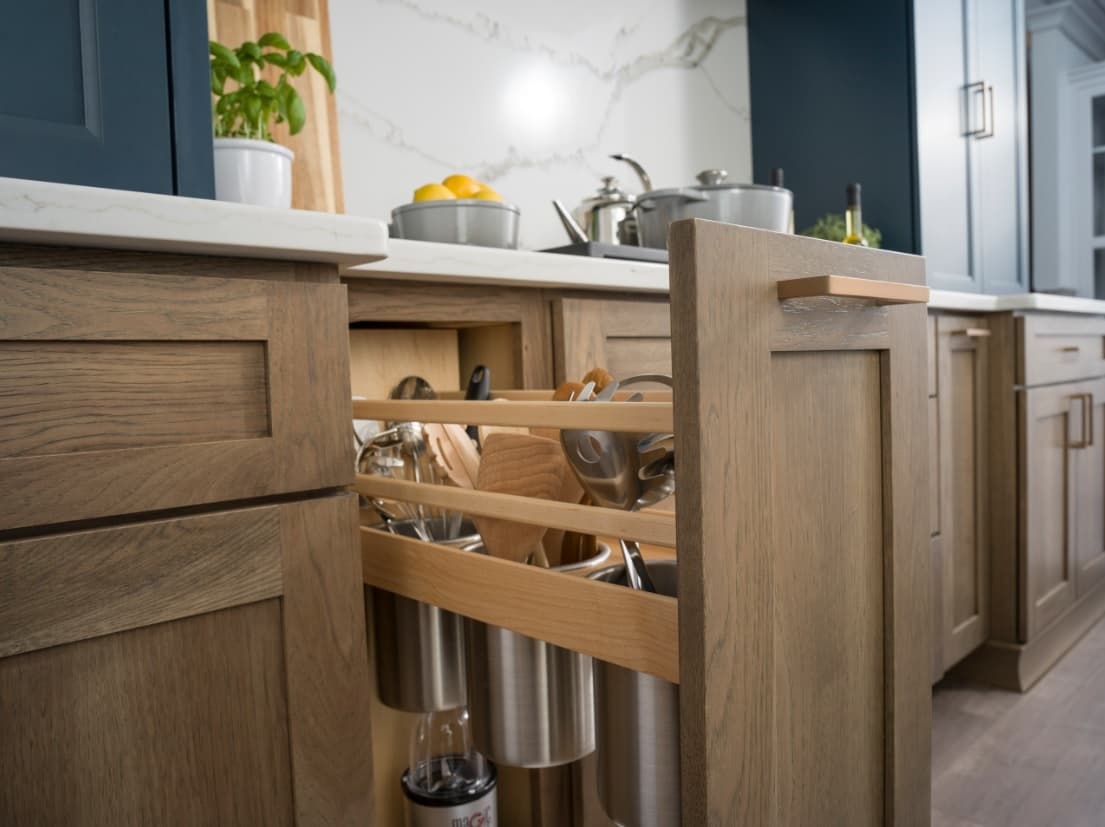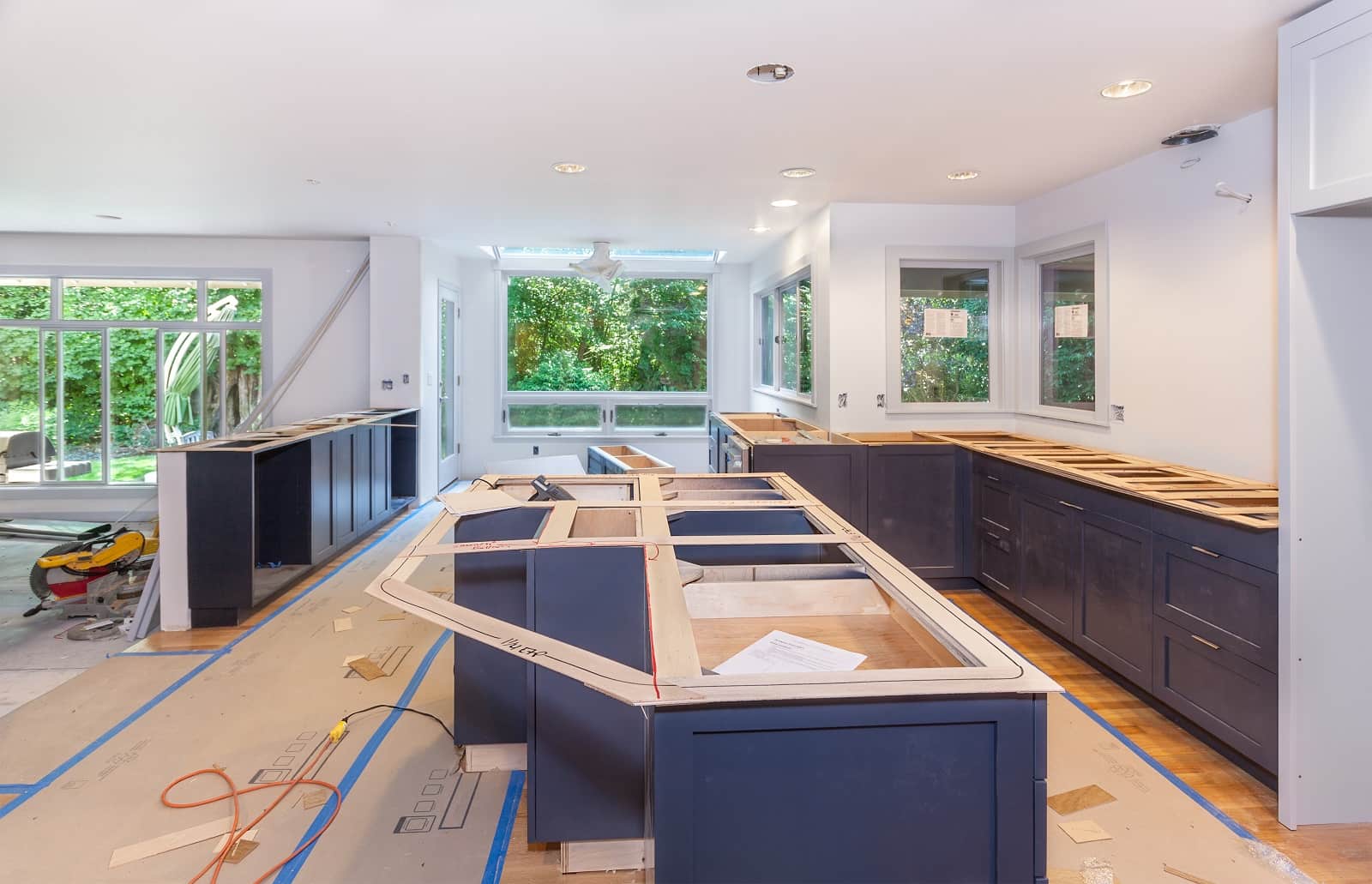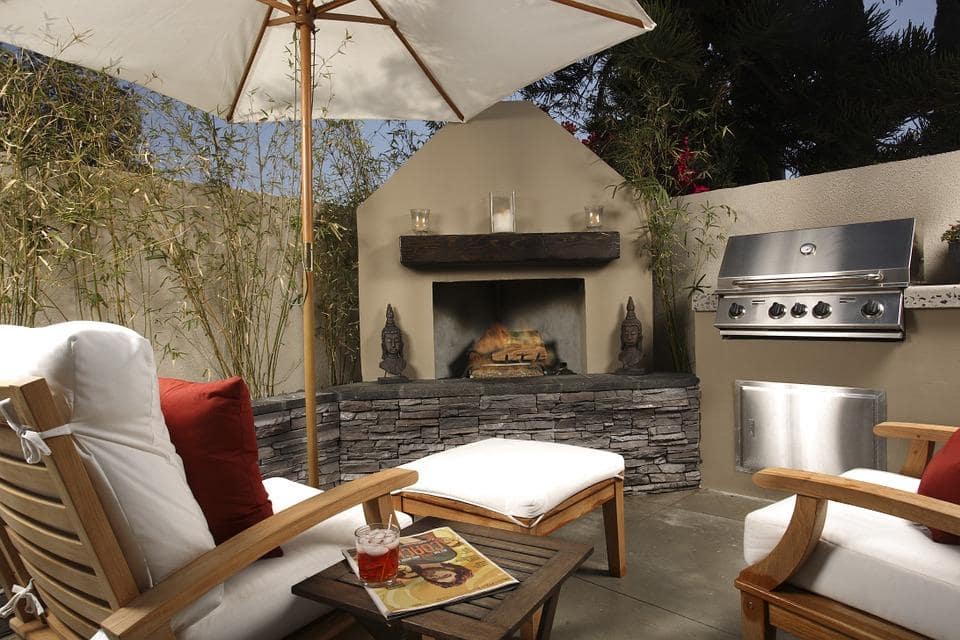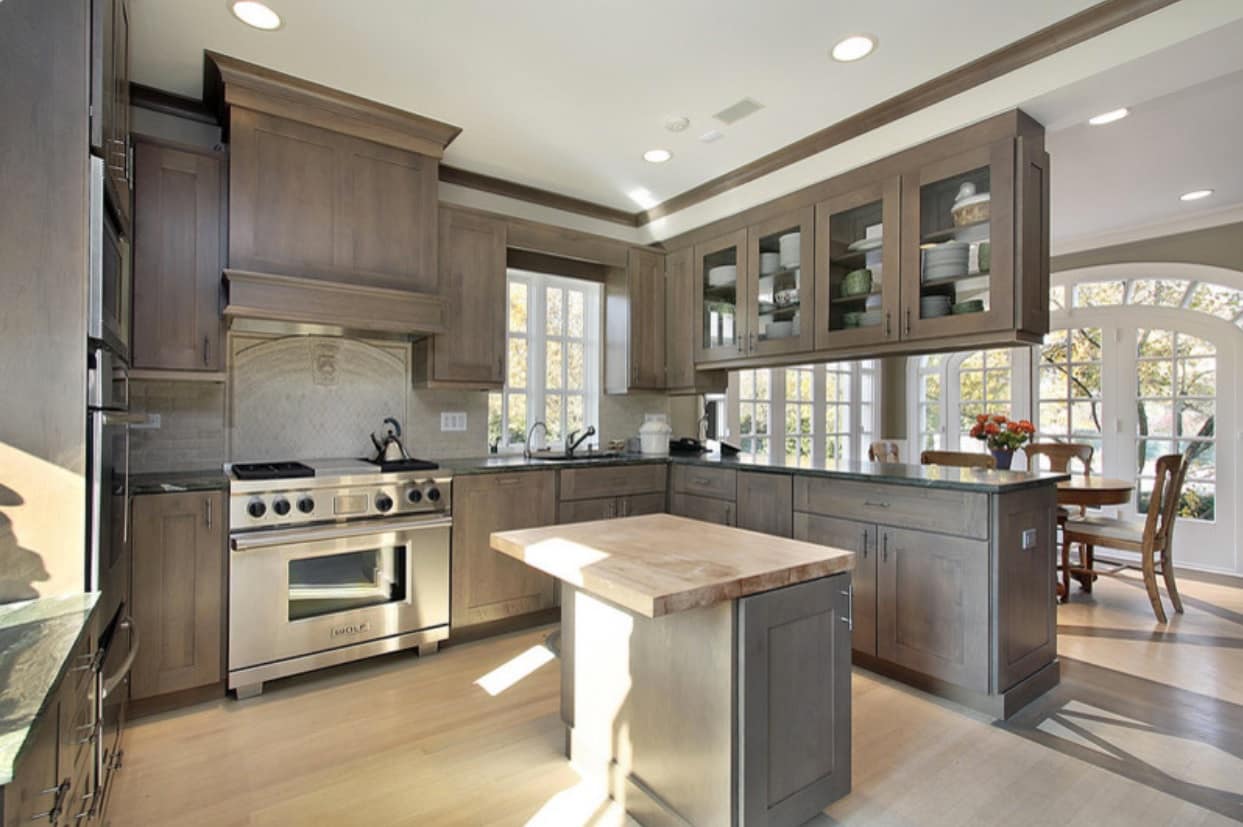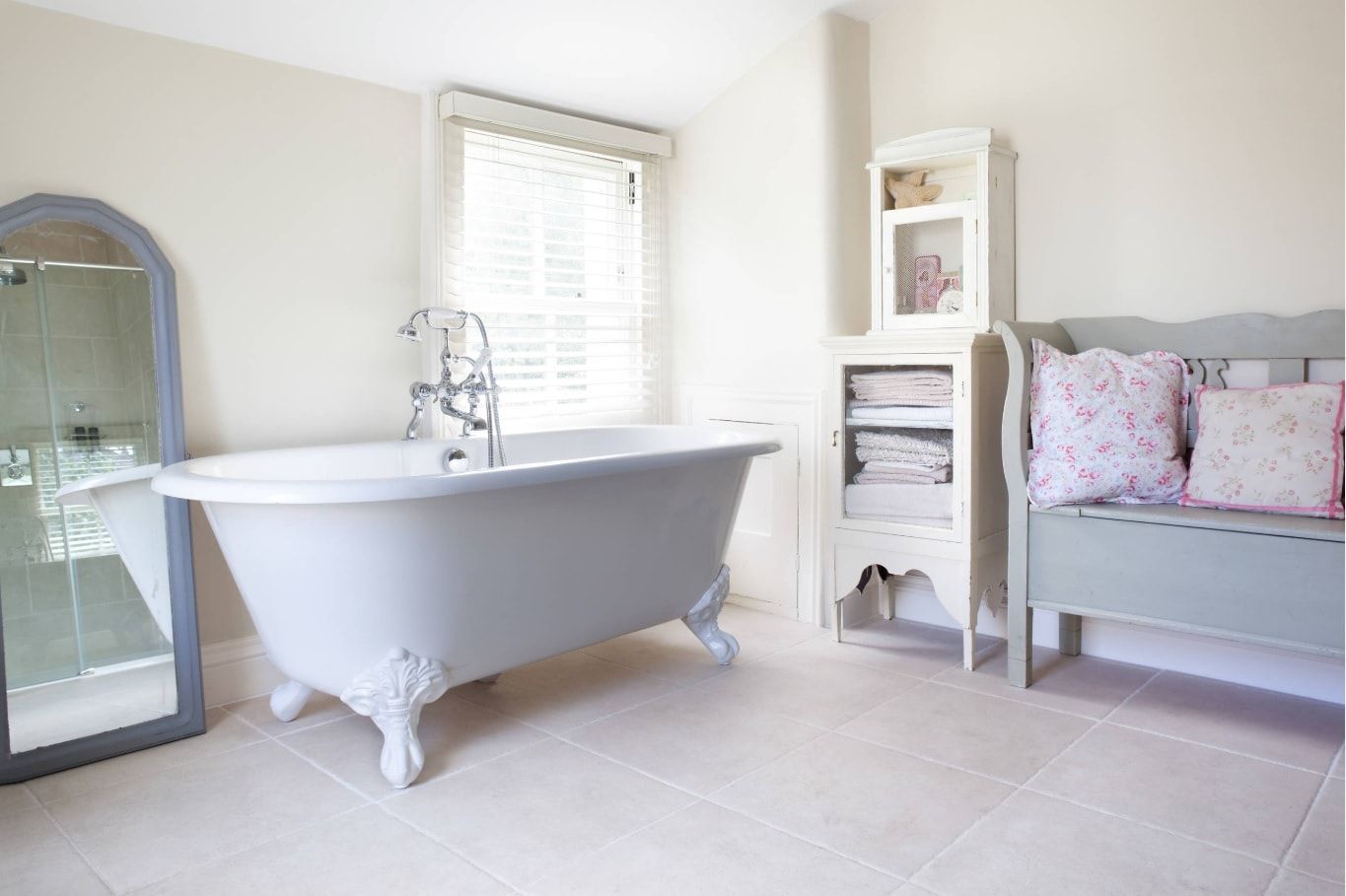Classic never gets old, does not lose its relevance, and is always a sign of refined taste. That is why the classic kitchen is a simple but at the same time intelligent solution that allows you to combine such important properties of this room as practicality, style, and comfort.
Contents:
However, the creation of a masterpiece of design art will require strength and great attention to detail.
Basic Rules for the Design of a Classic Kitchen
- Classic style is a commitment to clear lines and geometric shapes. Almost always, the kitchen in such a design solution assumes a linear arrangement of the furniture set (sometimes the L-shaped option can also be used).
- Most of all this style is suitable for spacious kitchen premises – it is possible to reveal all the wealth and luxury of details in it.
However, the advantage of the classics is that it will not spoil the small kitchen – in this case, a more thorough design of the project will be needed, but coziness and comfort will be ensured in any case.
- This style is characterized by the use of natural only materials or their high-quality imitations. The most common is the use of hardwood. Also, designers often resort to the details of natural stones.
Most often, classic-style furniture facades are made from oak, cedar, walnut, and cherry trees. However, the use of all-natural elements involves large financial costs, so more democratic options usually only mimic the above options. Classic kitchen refacing can also help when it comes to refreshing the look of the furniture set and the overall space. Also, use refacing when your old kitchen lost its initial attractiveness.
- Much attention to the design of the room is drawn to the selection of lighting. It is clear that modern plastic and similar chandeliers do not fit this style. Think twice about the introduction of spotlighting. It is functional yet can disrupt the unity of the style of the room.
- Most often the classic does not involve a large number of small details. There should not be a feeling of overload. However, relevant and suitable to the overall color interior items will be a good acquisition even for such a room.
Important! Cookware in the classic kitchen should comply with the overall design, so it is better to stop the choice on porcelain or ceramic items of a unified design.
What Color to Choose?
The color scheme of a classic kitchen often involves the use of monochrome tones. In the interior, there are two or three colors, while bright, neon, and eye-catching shades are completely excluded.
Thanks to this, classic never irritates the eyes and does not bother. Let us consider the possible color palettes in more detail.
Light Classic Kitchen
This option is popular at all times and, accordingly, never goes out of fashion. Classic kitchens are rarely made in white color – it does not have the natural nobility, which is inherent in the Classic style.
It is better to choose from a pastel palette: the color of vanilla or caramel, shades of cappuccino, and ivory, as well as milky, cream, wheat colors – all these will be an excellent solution for coloring.
Very light shades of blue and pink are less commonly used. The advantage of pastel shades is not only in contact with the style but also of good compatibility with each other. Gold-plated and silver-plated details will be good additions to the bright kitchen.
When choosing light tones for decoration, you need to keep in mind their visual properties: they expand the space and make it lighter. Therefore, they are better suited for small rooms.
In the opposite case, it is better to give preference to dark shades, which, on the contrary, visually reduce and “collect” space.
Classic Kitchen in Dark Colors
Among the dark shades, the shades of brown are most often used in the design. Sometimes you can also find dark gray and dark blue tones.
Black is also one of the possible solutions, but only in combination with other shades, otherwise, the interior will turn from classical into gothic.
Dark colors always look advantageous and noble, so this color palette will fit perfectly into the classic interior.
When creating a design, you can use contrasting colors, that is, to combine the dark and light shades listed above. The main thing, as noted earlier, is not to add too bright details, which stand out from the general concept.
The combination of beige and brown has always been the most successful option for the design of the kitchen, and this trend is fair today.
Due to the fact that these colors have a large number of shades, which are successfully combined with each other, designers have unlimited scope for imagination, which, with proper selection of tones, can result in a stylish and elegant classical kitchen.
The Natural Wooden Color in the Design of the Classic Kitchen
Above, we looked at light and dark shades without reference to the materials, but for a kitchen set, wood is the ideal design option.
Therefore, the colors described above and the rules for their use will look most advantageous when a significant part of the interior is made of wood (or framed for it).
In addition to the furniture set is also true to other furniture including table, chairs, etc., as well as the floor – the best option for it would be parquet. In general, the color of the natural wood is the best solution for the classics.
Small Kitchen in a Classic Style
When developing a project of a small kitchen space, the functionality of every detail of the interior is of paramount importance. Classic allows you to combine beauty and ergonomics, so this style can be used to design a kitchen with a small area.
In this case, you should adhere to the following tips:
- Prefer light shades that will visually increase the space and avoid the feeling of clutter.
- Pay attention to the corner small-sized kitchen furniture sets – this is ideal in terms of combining functionality and style. Today, there is a huge range of such sets on the market, so even the most demanding customer will be able to find furniture for himself.
- Pay particular attention to the correct selection of lighting – a small kitchen must be bright. It is a guarantee of warmth and comfort.
- Avoid heavy parts – bulky curtains, large lamps, solid furniture. Everything should be proportional – the size of the kitchen should correspond to the size of the interior elements.
By adhering to these rules, you can create the perfect classic kitchen even in a small room.
Large Classic Kitchen
Large kitchen area is exactly what will allow you to embody the original canons of the classical style. Many people associate classic with luxury, an abundance of massive details and this is close to the truth.
Of course, all this should have a strictly functional purpose, because the kitchen is first of all a dining and working room. But in a large room, you can find a place for both functional and decorative objects.
Making a large kitchen is in close dependence on the budget. When you are ready for the high costs of the classic components, you can afford to get close to original understanding of Classicism -furniture of natural solid wood, crystal chandeliers in Vintage style, built-in appliances, natural laminate and porcelain tableware – hardly such a kitchen will leave someone indifferent.
However, at a lower cost, the classic kitchen can look elegant. Today it is quite difficult to distinguish imitations of natural materials from the original counterparts by a non-professional. In addition, the classics can be not only luxurious, but also restrained – the absence of a crystal chandelier will not leave the room impersonal. But well-chosen furniture and accessories will emphasize the refined simplicity of the classical style.
Summarizing, we can say that the classic will be a good choice for a kitchen of any size. However, it does not have rigid boundaries, so each designer can create his own interpretation of the classic kitchen, which will include all its advantages – style, comfort and coziness.
And, of course, another undoubted plus is that such a kitchen can last for a very long time and without losing its relevance.










